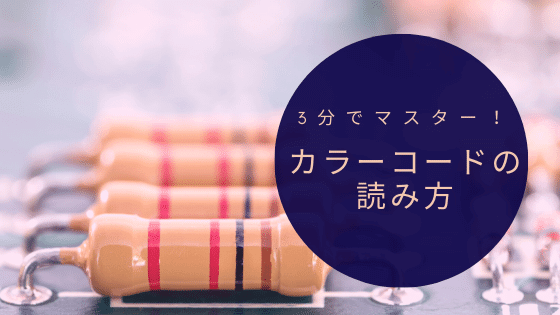Hello, this is Bono.
If you are doing electronics work, you will probably have quite a few opportunities to come in contact with resistors.
However, when I looked at the resistor, I was at a loss, because it did not say how many ohms it was,
Or, if you have a tester, measure each piece individually with the tester,
What a lot of people!
Do you know that resistors have color codes?
By looking at the color code, you can decipher the resistance value with a single glance.
In this article, we will introduce how to read it for beginners in electronics.
intended audience
About Resistors
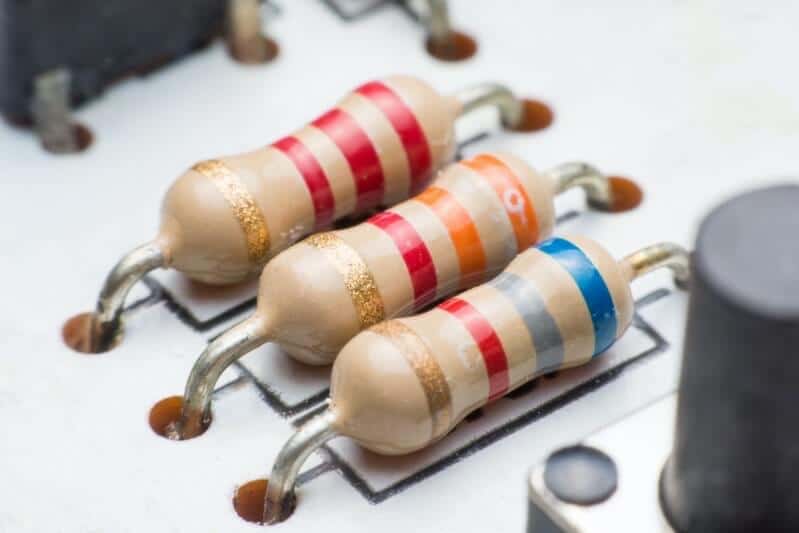
A resistor is one of many electrical components,
It has the role of limiting current and converting voltage by combining several resistors.
voltage by combining several resistors.
It is the most used electrical component in the world.
(The next would probably be capacitors.)
Resistors have colorful lines on them as shown in the photo above, which can be read to determine the resistance value.
This is called a color code.
Electronic components are so small that it must have been a bitter pill to swallow.
Color codes are a little difficult to learn at first, but once you learn them, your life in electronics construction will change drastically (?). So, let’s take this opportunity to learn it!
There are many types of resistors, such as leaded types and chip types.
Please understand that this discussion is specific to the lead type, as each has a different way of notation.
Color Code Configuration
The color code consists of four lines as shown below (there is also a type with five lines, but this is a rare case and can be ignored first).
Each of these four lines represents the following
- The first one is the first digit of the number
- The second one is the second digit of the number
- The third one is a multiplier
- The fourth one is tolerance.
As explained next, this resistor represents 1, 0, 10^2, and ±5%, respectively, so it is a ±5% product of 10 x 10^2, or 1000Ω.
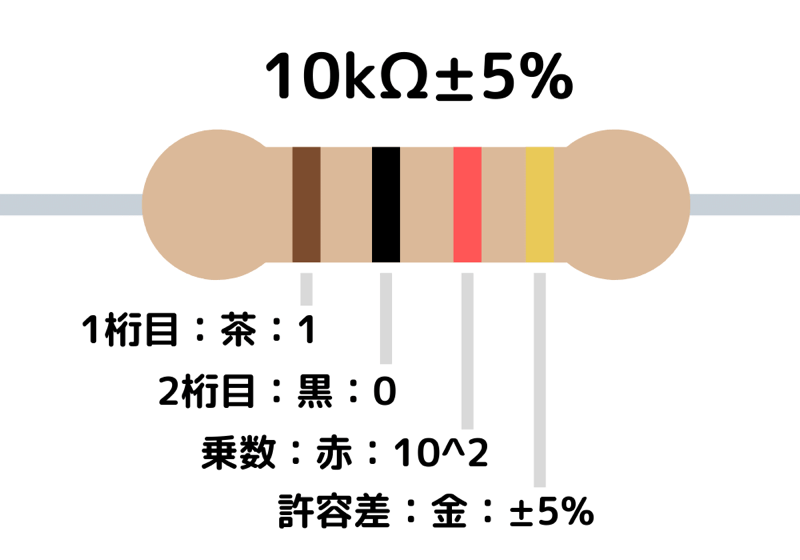
How to memorize resistor color codes that can be mastered in 3 minutes

In conclusion, it is good to remember the following
The key point is the column on the rightmost column on how to remember.
For example, if it is 0, it is black, so it is called a black ceremonial dress (reihuku), and so on.
For example, “0” is black, so you will remember “black reifuku”.
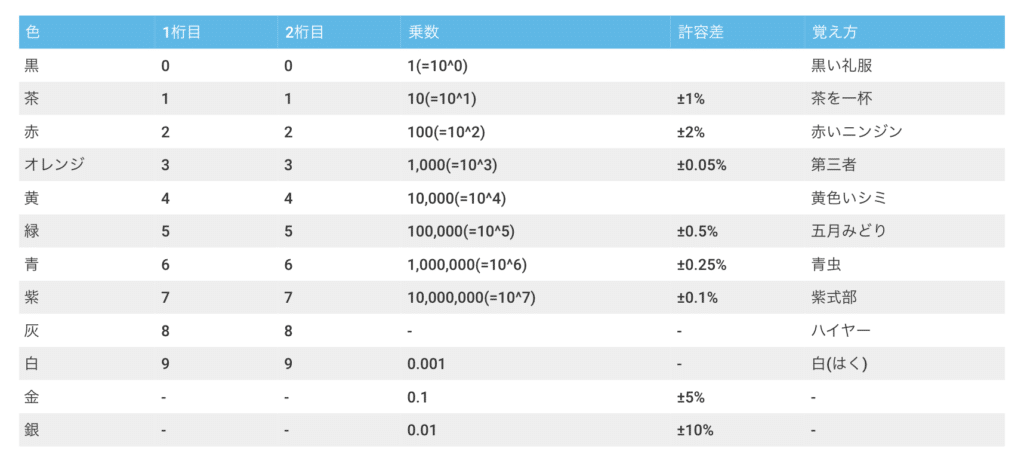
Probably every electrical engineering student has learned this way at least once in class.
How each word is used seems to be different in each district, like dialects, but I memorized them as shown in this table.
Repeat this out loud incessantly.
Now all you have to do is just read out loud the letters in this column of memorization.
Properly,
Memorize it until you can say it without looking at it.
You will be able to say it without looking at it.
Seriously.
Electrical students are always made to memorize them verbatim in class.
Conversely, I still remember the color codes because of that experience.
Repeat at least 30 times!
advice of a point (advice that may be helpful to some people)

These are the ways to remember, but here is some advice.
If you just can’t remember
If you just can’t remember it even after saying it out loud, at worst, just remember the color code below.
- Red, Black, Orange, Gold: 10kΩ±5
- Red, Black, Red, Gold: 1kΩ±5
This is because these color codes have a crazy high usage rate.
In fact, when doing electronic construction, there are many situations where “any constant is fine, but I want to put in a resistor for now,” and in such cases, these resistor values are usually used.
The occurrence rate of these values is still high, even in sample circuits and the like.
Percentage of occurrence of each number
Resistance values include E6 series, E12 series, and E24 series.
The number after E means the number of equal parts between 1 and 10.
For example, the E6 series is divided into six series: 1.0, 1.5, 2.2, 3.3, 4.7, 6.8, and so on.
The most used resistors are
E12 series, which are 1.0, 1.2, 1.5, 1.8, 2.2, 2.7, 3.3, 3.9, 4.7, 5.6, 6.8, 8.2
are.
In terms of color codes, brown and red appear more frequently, while black, yellow and white appear less frequently, as shown below.
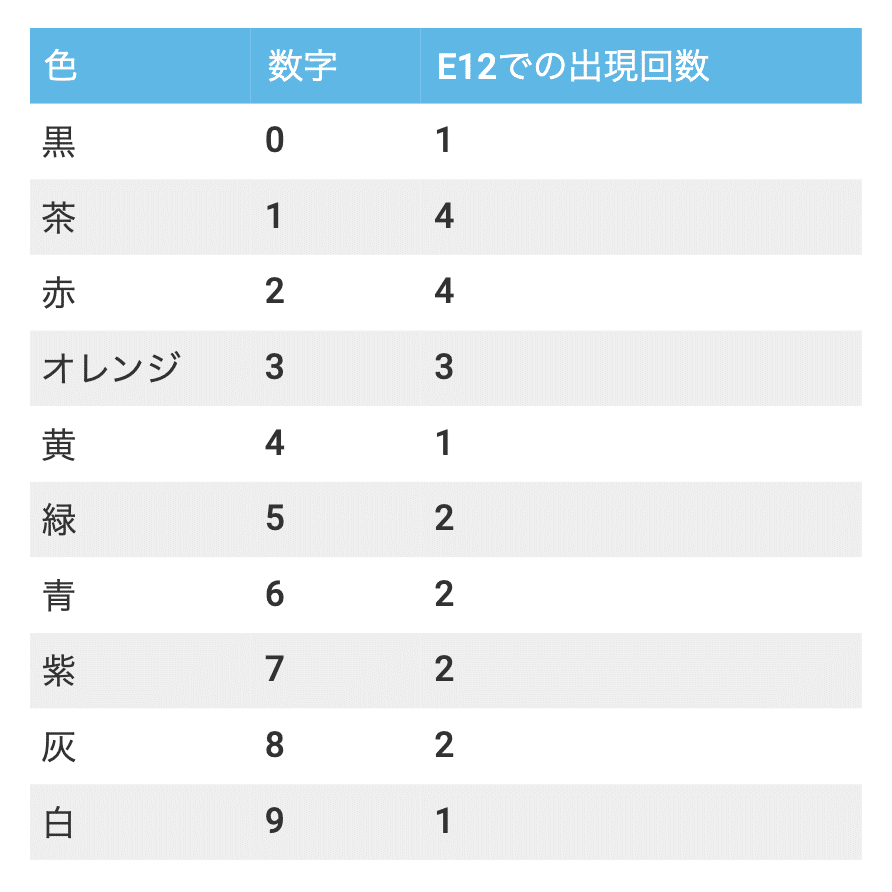
However, black and yellow are rather common orders since the multiplier is 10^0 or 10^4.
As a result, white appears less frequently than other colors, so it has a lower priority to remember.
summary
In this article, we have introduced how to learn the color codes of resistors, targeting beginners in electronics.
How was it?
At first you will be confused, but don’t worry, you will get used to it as you see it over and over again!
Be sure to learn it so that you can take your electronic skills one step higher! Good luck!
 Start electronics
Start electronics 